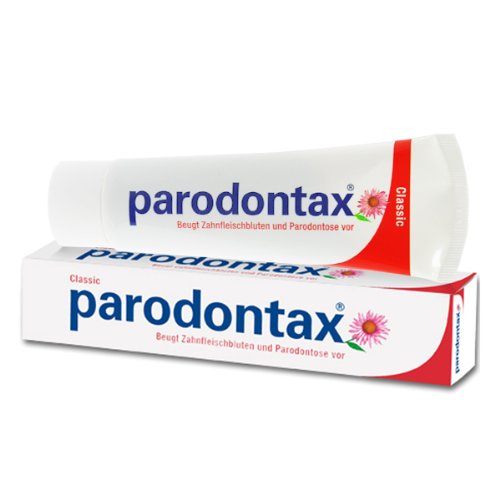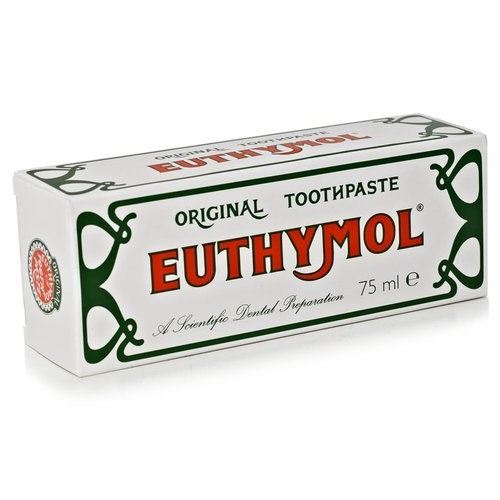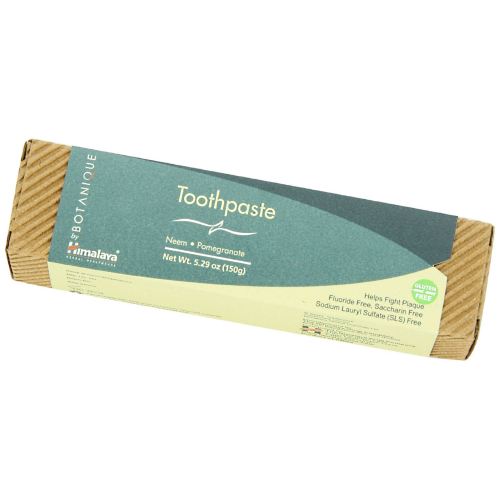Toothpaste is just so much part of our everyday life that it is the very fist thing that would spring to our mind about oral hygiene. True, a toothbrush is also needed to apply the cleaning gel to our teeth in order to help it stay healthy and clean. It is mainly otherwise common abrasive ingredients and the mechanical brushing action itself that do the job of removing dental plaque. The various ingredients of different toothpastes are there to provide good breath prevent and cavities.
Ingredients
The water content of toothpaste can be as high as 40 percent and the rest of the ingredients fall into three categories: detergents, abrasives and fluoride.
Fluoride, a common active ingredient against tooth and gum disease (cavities and gingivitis respectively). Toothpaste containing fluoride are toxic in massive amounts but an great quantity would be needed to be ingested to achieve the effect. Fluoride is quite a debated subject when it comes to oral hygiene. It is a common ingredient since the 1950s. Children should not be given fluoride content toothpaste in very early age because there the danger of intoxicating effect when swallowing due to their small bodyweight. Non-fluoride alternatives are simply a safer choice up to the age of 3. Interestingly, some countries have higher fluoride content toothpaste (UK and Greece). Many choose to use baking soda or simply salt instead of commercially available toothpastes as a supposedly healthier and cheaper fluoride-free alternative.
Abrasives usually make up at least half of the toothpaste. They are there to clean polish your teeth, so it is also for an aesthetic effect. While your teeth may become whither there is the danger of enamel erosion if the abrasives are used in excess.
Detergents, also knows as surfactants, are there solely make the it foamy,so the toothpaste spreads betters. They are present in countless other cosmetic products like shower gel and shampoo.
Flavor
While the usual plain white and mint-flavored is quite common, toothpastes are often colorful and flavored to make them attractive and pleasurable to use. Spearmint, wintergreen and peppermint are most widely used are flavorants. Natural oils are added to the gel to create the desired taste. Kids’ toothpastes have their own mellow and child-friendly tastes. Otherwise there are quite a few radical ones out there like ginger, cinnamon or pine. Unflavored toothpastes are also sold not necessarily only to please the purists but also because most flavored toothpaste alter your taste perception. This phenomenon is the most apparent when consuming citric fruits or their natural juices straight after a cleaning.
Certain makes of toothpaste claim to aid the reformation of enamel with special ingredients added, calcium phosphate, for example.
Be aware of Tricalosan, which is added mainly in the UK to reduce tartar and bad breath. Some suggest that it can form toxic chloroform tap water. It also said to interfere with the hormone system.
Whitening toothpastes
Many toothpastes say they make your teeth shinier and more white. The way it works is that they scrub away the surface stains using the abrasives. Additives cannot penetrate teeth to reverse discoloration, they all work on the outer layer. Sodium tripolyphosphate is added at times to help chemically break down the stains. The majority of these products contain peroxide, so you are bleaching your teeth. If you use it normally, whitening toothpaste may make your teeth brighter looking after a couple of weeks.
Many turn to more intensive teeth whitening gels as an alternative. Be careful though, because this process damage your teeth in the long run weakening the enamel outer layer. Sodium tripolyphosphate is added at times to help chemically break down the stains. The majority of these products contain peroxide, so you are bleaching your teeth.
Herbal toothpastes
Many buyers are wary of the artificial ingredients regular toothpastes often contain and there is a big market for natural and herbal toothpaste. Fluoride or sodium lauryl sulfate are not among their ingredients. They usually all contain baking soda but apart from that are very different. Versatile essential oils and plant extracts are their defining ingredients.
Tooth powder
Tooth powders are beginning to regain their popularity. Most of them are baking soda based products. Even if you prefer toothpaste, powder is a quite smart and cost-savvy back-up.
read toothpaste product recommendationsEuthymol is a brand of antiseptic, fluoride-free toothpaste distributed by Johnson & Johnson that is characterised by its bright pink colour and medicinal taste. It is also notable for its packaging, which is old fashioned, having merely a pattern and the product name. The antiseptic ingredient in Euthymol is thymol. Since it is antiseptic, Euthymol can help with the prevention of mouth ulcers. The taste is unique but unlike strong peppermint toothpastes, it does not interfere with the taste of food or drink (when brushing before going for a meal for instance).
Paradontax is a specially formulated toothpaste made according to a German formula. It is highly recommended for those suffering in periodontal disease because it contains a ratanhia, a herb which has very beneficial effect on gums. This toothpaste relies on natural
ingredients: the abrasive ingredient is mineral salt and it also contains several healing herbs (sage and myrrh echinacea and chamomile).
Himalaya is a herbal toothpaste with a rich heritage. It has been manufactured along with other pharmaceutical grade herbal remedies by the family owned Himalaya Herbal Healthcare for almost a century. This toothpaste has a positive effect on gingivitis, so it is highly recommended for everyone with gums problems. It contains pomegranate extract that has strong antioxidant qualities and keeps your gums health along with Arabic acacia extract, a calming element. Also contains the ancient teeth cleaning neem leaf extract. A tried and tested product from a company with great reputation.



